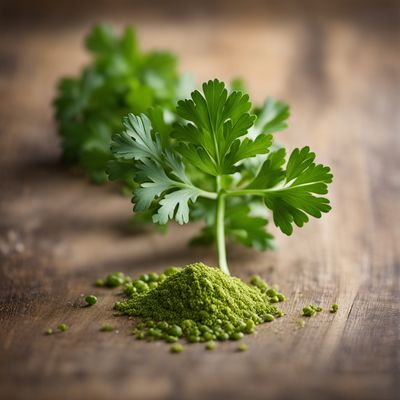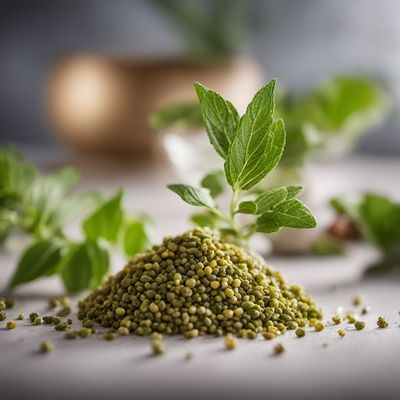
Ingredient
Peppermint flavour
The Refreshing Essence: Peppermint Flavour
Peppermint flavour is derived from the essential oil of the peppermint plant, Mentha piperita. It has a strong, minty taste with a cooling sensation. The flavor is often described as refreshing, crisp, and slightly sweet. Peppermint flavour is commonly used in candies, chocolates, ice creams, and beverages such as teas and cocktails. It can also be incorporated into savory dishes like salads, dressings, and marinades to add a unique twist.
Origins and history
Peppermint has a long history dating back to ancient Egypt, where it was used for medicinal and culinary purposes. It was later introduced to Europe and became popular for its refreshing properties. Peppermint flavour gained widespread recognition in the 18th century when it was used to create the iconic peppermint candy cane. Today, it is cultivated in various regions around the world, including the United States, Europe, and Asia.
Nutritional information
Peppermint flavour is low in calories and does not contain any significant nutrients. It is primarily used for its taste and aroma rather than its nutritional value.
Allergens
Peppermint flavour does not typically pose any allergenic risks. However, individuals with a sensitivity to menthol, the main compound in peppermint, may experience adverse reactions. It is advisable to use peppermint flavour in moderation and consult with a healthcare professional if you have any concerns.
How to select
When selecting peppermint flavour, opt for reputable brands that use natural ingredients and avoid artificial additives. Look for products that are labeled as pure peppermint oil or natural peppermint flavoring. Check the expiration date to ensure freshness and quality.
Storage recommendations
To preserve the freshness and potency of peppermint flavour, store it in a cool, dark place away from direct sunlight or heat sources. Keep it tightly sealed to prevent moisture and air exposure, which can degrade the flavor. Properly stored peppermint flavour can retain its quality for up to 2 years.
How to produce
Peppermint plants can be grown in home gardens or pots. They thrive in well-drained soil and require regular watering. Peppermint can be propagated from cuttings or purchased as young plants from nurseries or garden centers. With proper care and maintenance, you can enjoy fresh peppermint leaves for culinary use.
Preparation tips
Peppermint flavour can be used to enhance the taste of various desserts, including cakes, cookies, chocolates, and ice creams. It is a popular choice for mint-flavored beverages such as hot chocolate, tea, and cocktails. Peppermint flavour can also be added to savory dishes like salads, dressings, and marinades to provide a refreshing twist. Additionally, it can be used to create homemade peppermint syrups, extracts, and infused oils.
Substitutions
Spearmint flavour can be used as a substitute for peppermint flavour, although it has a slightly different taste. Alternatively, you can use a combination of spearmint and wintergreen flavors to mimic the cooling sensation of peppermint. However, keep in mind that these substitutions may alter the overall flavor profile of the dish or beverage.
Culinary uses
Peppermint flavour is commonly used in candies, chocolates, ice creams, beverages, and desserts. It can be incorporated into cakes, cookies, brownies, and fudges to add a refreshing twist. Peppermint flavoring is also a popular choice for making peppermint bark, truffles, and mints. In savory dishes, it can be used to create peppermint-infused dressings, marinades, and sauces.
Availability
Peppermint flavour is widely available in grocery stores, baking supply stores, and online retailers. It is commonly found in the baking aisle or the flavorings section of supermarkets. Peppermint plants can be grown in home gardens or purchased from nurseries or garden centers.
More ingredients from this category » Browse all

Ginger flavour
The Zing of Ginger

Guanabana flavour
Exotic Tropical Delight

Chocolate dark flavour
Decadent Delight: Unveiling the Richness of Dark Chocolate

Parsley flavour
The Versatile Herb: Parsley's Flavorful Impact on Culinary Delights

Carrot flavour
The Vibrant Essence of Carrots

Prune flavour
The Rich and Velvety Prune Flavor

Herbal blend flavour
The Art of Herbal Infusion

Gin flavour
The Essence of Gin

Fruit cocktail flavour
The Sweet Symphony of Fruity Delights

Mustard flavour
The Zesty Essence: Mustard Flavour

Rose flavour
The Enchanting Essence of Roses

Mixed berry flavour
The Burst of Berry Bliss: Exploring Mixed Berry Flavor